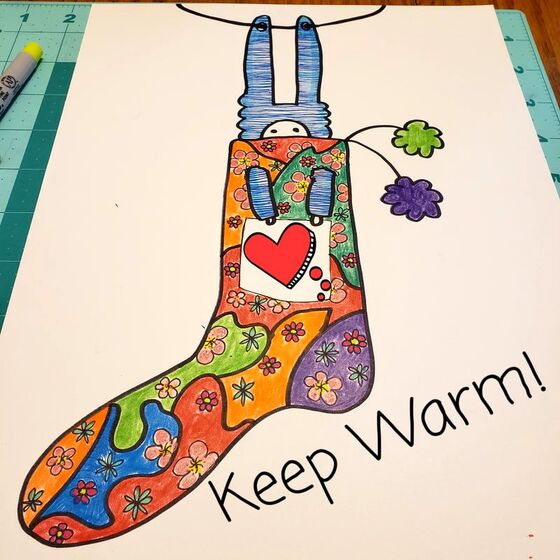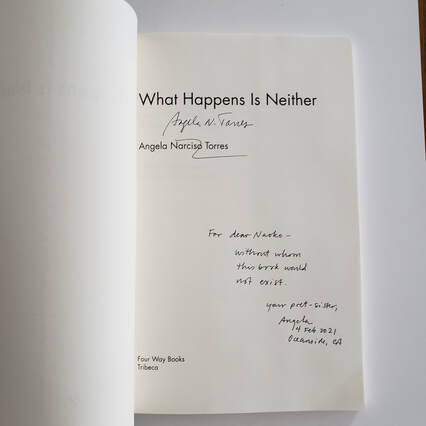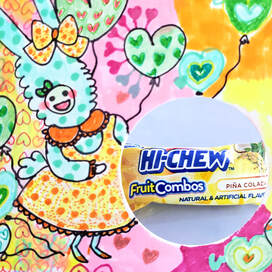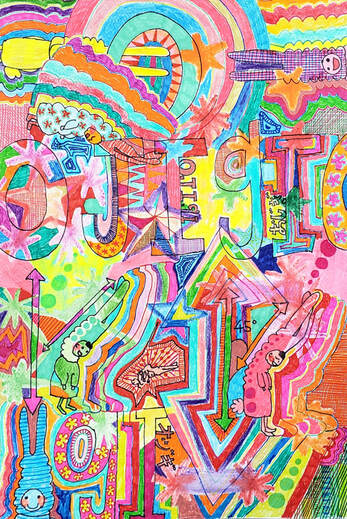|
I output more than I am capable of when I meet smart, trusted people. In the creative field, one is always surrounded by competitive fellow writers and artists. I have a tremendous ego, much like so do many of them. And with some sort of fear -- like threating letters -- I must write. I must create new things. My first publication in the U.S. was in 2008. I still remember that two poems were accepted by Kathleene West at Puerto del Sol on Christmas Eve in Japan. I was spending time with my family. Later, she and I started exchanging emails. Once I graduated and had more free time to travel, she passed away. I did not know of her death until someone told me at the following AWP. The last words from her email (April 6, 2013) were: I hate to say. Don't try too hard. So I will just say be gentle with yourself. It's all about progress not perfection . Of course, I don't follow my own advise, but still... Finally, I started to understand what "progress, not perfection" meant. Like my first graphic poetry collection, I was really specific in only using base poems that were already published in magazines. This created a metal safety-net for me because I knew the base material has already been proven. I was protecting myself with my own adaptation of perfection. I think that I am more relaxed now because I found places where I could be me -- Japanese, female, a second-language writer, poet, & artist -- with people who have similar goals. Natalie Solmer is the editor-in-chief of the Indianapolis Review. With her motherly garden of quarterly journals, I could have experiments with not only large scales of graphic poems, but also recording with music and ambient noises. She let me play in the creative field -- Free-Range Naoko, Origami-Fed. Solmer accepted three pieces of my work, including an art review for Minami Kobayashi's works. This experience lead me to create longer versions of graphic poems (forthcoming, North American Review) and audio & graphic poetry (forthcoming, Zocalo Public Square). I am really lucky to know her while growing in these poetic fields. She became one of the most important people in my tribe.
Speaking of my tribe: RHINO Editors had their first #RHINOArt2Art submission meeting. Holy R-H-I-N-O! There were more submissions than I expected. After careful considerations, the editorial team will post the visual adaptations in RHINO Poetry's Facebook, Instagram, and Twitter. One editor told me, "This is your baby. Own it." That was another moment that snapped my awareness of my progression into place. I am grateful to be accepted as a free-range RHINaOko there. And I am truly enjoying these experiences progressing to the next phase. Thank you so much for the birthday gifts and lovely messages. I LOVE them all.
I witnessed how Angela Narciso Torres' newest poetry collection, "What Happens is Neither" (Four Way Books), was composed.
She received her publishing opportunity right after both her parents passed away and she became an empty shell. Her body was screaming, but not just with grief. The last months with her parents were filled with long flights between America and Manila. It was exhausting. But one Thursday morning, she woke up, wrote some, edited her manuscript, and sent it to Martha Rhodes before the weekend deadline. (And then back into her shell.) The process seems easy to do, and all incredible works that I recently witnessed (from reading many other manuscripts and craft essays from "Working On Gallery") seem so seamless like beautiful Lake Michigan in February. Have you ever walked by the lake during the season? You cannot do that with an attitude of namahanka. My new graphic poetry project started! It will be longer than "Offshore of Rikuzen Takata" (22 pages, forthcoming North American Review Spring/Summer, 2021). This project will be in a simple black & white format. I realized how much I could express with black pens & pencils. Many students inspired me this year through virtual lectures. Even their first drafts, their black & white sketches sparked my curiosity. I would like to explore more about this art style. I read two volumes of MAUS by Art Spiegelman. In these, the author recorded his father's war experiences as a Polish Jew and Holocaust survivor in a black & white comic format. I admire his art style and story telling technique.
This new project will explore my grandmothers' war experiences exclusively through black pens and pencils. I have previously written and published poems about their stories, but now strongly feel that it is necessary to show these visually before they pass on. This project is somewhere between poetry and creative non-fiction in a wide-screen comic style. 小学校1年生の夏休みに、ハイチュウブドウ味禁止令が出されて以来、久しぶりのハイチュウ。
ピニャコラーダ、ドラゴンフルーツ、マンゴー味と、新しいフレーバーがこんなにあるとは驚きました。 お辞儀のことをお話しする機会があったので、グリッピーの挿絵を描いていたら、とってもカラフルというか、psychedelicな感じに仕上がりました。
大尊敬している、ラルフ元編集長が、"Yowza! Kaleidoscopic!"とおっしゃって。 お辞儀の文化って、まさしくその通りだなと実感。 日本人の友人たちに、”最近、いつお辞儀した~”と聞いてみると、千差万別。しかも、子供たちは、鶏みたいなお辞儀もしたよって教えてくれました。 |
About NaokoArchives
June 2024
|
フジハブ
Welcome to FUJI HUB: Waystation to Poetry, Art, & Translation. This is not your final destination. There are many links to other websites here, so please explore them!
Welcome to FUJI HUB: Waystation to Poetry, Art, & Translation. This is not your final destination. There are many links to other websites here, so please explore them!
What are you looking for?
FUJI HUB Directory
Popular Sites:
Gallery of Graphic Poems
Working On Gallery
(Monthly New Article by Writers & Artists)
About Naoko Fujimoto
Contact
Naoko Fujimoto Copyright © 2024
FUJI HUB Directory
Popular Sites:
Gallery of Graphic Poems
Working On Gallery
(Monthly New Article by Writers & Artists)
About Naoko Fujimoto
Contact
Naoko Fujimoto Copyright © 2024












